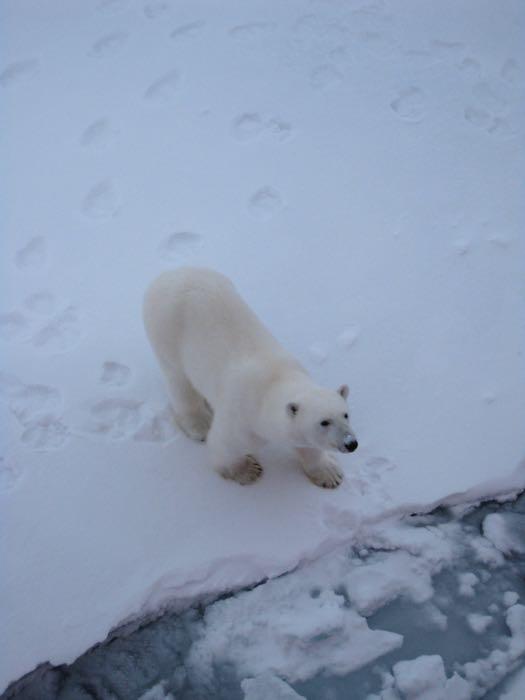I'm Still Packing
 There is still so much to do as I try to figure out what to pack for two months on a boat in the Southern Ocean.
There is still so much to do as I try to figure out what to pack for two months on a boat in the Southern Ocean.
While the act of packing enough stuff to keep me happy and clean during two months at sea continues to be a confounding task, I have recently been reading about the MOSAiC expedition, and I realize I have it pretty easy. The Multidisciplinary drifting Observatory for the Study of Arctic Climate, or MOSAiC, is currently spending a year frozen into the ice of the Arctic Ocean as the scientists onboard collect data on weather patterns in an effort to better understand and predict changes in weather that might occur in other parts of the world as our planet continues to warm. Markus Rex, the atmospheric scientist in charge of the MOSAiC project, says "The Arctic is the area where much of the weather is made. Understanding the Arctic helps us understand extreme weather." The planning and preparation that went into starting this expedition was staggering. 600 scientists from 19 countries will be involved in the work over the course of the year, and imagine if two or three of them have gluten allergies? Or worse – what if a handful are vegetarians? Whenever someone is working out on the Arctic ice, guards have to first construct a two-mile perimeter fence around them, then stand watch for polar bears, while wearing night vision goggles and armed with a flare gun, pepper spray, and a rifle. If anyone sees a bear, the guards alert the ship, which blasts its horn in an attempt to scare away the bear. Firing a flare and spraying pepper spray are the next lines of defense. As a last and heartbreaking resort, the guards will fire at the polar bear. Imagine if you were the one who forgot to pack the flares?
 Cristina Galvan: "She was a very inquisitive bear – sniffing all the snow around the boat to figure out what we were." Aboard the USCGC Polar Sea icebreaker in the Beaufort Sea. Photo Credit to Cristina Galvan, PolarTREC 2009.
Cristina Galvan: "She was a very inquisitive bear – sniffing all the snow around the boat to figure out what we were." Aboard the USCGC Polar Sea icebreaker in the Beaufort Sea. Photo Credit to Cristina Galvan, PolarTREC 2009.
Professional logistics experts are people who help plan for expeditions like this. Their job is to make sure that every necessary item is packed securely on the boat before the trip begins. They're responsible for purchasing, organizing, and inventorying all the food, gear, medical supplies, and peanut butter cups to keep the mission operating safely and smoothly. I could use one of them in my living room right now.
Hey Teachers
If you want to explore the MOSAiC expedition with your students, there are a number of great resources online. Two of my favorites require you to have accounts. On the NEWSELA website (where basic accounts are free) there's a great story about the MOSAiC project, along with accompanying activities that focus on non-fiction reading skills. If you have an account with NEWSELA, you can also change the reading level of the article before sharing it with your students. The MOSAiC project was also recently featured in a Scholastic Science World magazine. This one requires a paid subscription to view, and I've been so grateful that my school invested in a class set this year. The magazine is frequently packed with really interesting stories and engaging photos and graphics- and the article about MOSAiC holds true to this. You can also read through posts by PolarTREC educator Kate Gavenus here, who was part of the MOSAiC expedition in September and October. There is a link to sign up to receive the MOSAiC Monday, a weekly email full of activities and information related to the expedition to help engage students with real-time updates, behind the scenes access to the MOSAiC expedition, and short, simple activities. Lastly, if your students want to try their hand at planning for polar expedition, The National STEM Learning Centre in the UK created a series of lessons, available for free on their website.


Comments
Add new comment